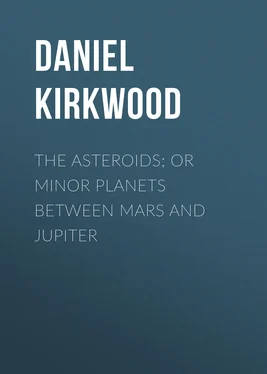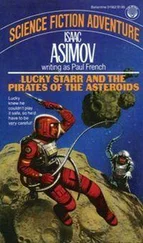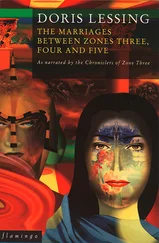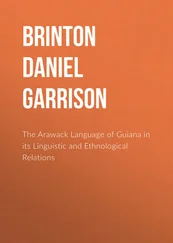Daniel Kirkwood - The Asteroids; Or Minor Planets Between Mars and Jupiter
Здесь есть возможность читать онлайн «Daniel Kirkwood - The Asteroids; Or Minor Planets Between Mars and Jupiter» — ознакомительный отрывок электронной книги совершенно бесплатно, а после прочтения отрывка купить полную версию. В некоторых случаях можно слушать аудио, скачать через торрент в формате fb2 и присутствует краткое содержание. Жанр: foreign_prose, foreign_antique, на английском языке. Описание произведения, (предисловие) а так же отзывы посетителей доступны на портале библиотеки ЛибКат.
- Название:The Asteroids; Or Minor Planets Between Mars and Jupiter
- Автор:
- Жанр:
- Год:неизвестен
- ISBN:нет данных
- Рейтинг книги:5 / 5. Голосов: 1
-
Избранное:Добавить в избранное
- Отзывы:
-
Ваша оценка:
- 100
- 1
- 2
- 3
- 4
- 5
The Asteroids; Or Minor Planets Between Mars and Jupiter: краткое содержание, описание и аннотация
Предлагаем к чтению аннотацию, описание, краткое содержание или предисловие (зависит от того, что написал сам автор книги «The Asteroids; Or Minor Planets Between Mars and Jupiter»). Если вы не нашли необходимую информацию о книге — напишите в комментариях, мы постараемся отыскать её.
The Asteroids; Or Minor Planets Between Mars and Jupiter — читать онлайн ознакомительный отрывок
Ниже представлен текст книги, разбитый по страницам. Система сохранения места последней прочитанной страницы, позволяет с удобством читать онлайн бесплатно книгу «The Asteroids; Or Minor Planets Between Mars and Jupiter», без необходимости каждый раз заново искать на чём Вы остановились. Поставьте закладку, и сможете в любой момент перейти на страницу, на которой закончили чтение.
Интервал:
Закладка:
Daniel Kirkwood
The Asteroids; Or Minor Planets Between Mars and Jupiter
PREFACE
The rapid progress of discovery in the zone of minor planets, the anomalous forms and positions of their orbits, the small size as well as the great number of these telescopic bodies, and their peculiar relations to Jupiter, the massive planet next exterior,—all entitle this part of the system to more particular consideration than it has hitherto received. The following essay is designed, therefore, to supply an obvious want. Its results are given in some detail up to the date of publication. Part I. presents in a popular form the leading historical facts as to the discovery of Ceres, Pallas, Juno, Vesta, and Astræa; a tabular statement of the dates and places of discovery for the entire group; a list of the names of discoverers, with the number of minor planets detected by each; and a table of the principal elements so far as computed.
In Part II. this descriptive summary is followed by questions relating to the origin of the cluster; the elimination of members from particular parts; the eccentricities and inclinations of the orbits; and the relation of the zone to comets of short period. The elements are those given in the Paris Annuaire for 1887, or in recent numbers of the Circular zum Berliner Astronomischen Jahrbuch .
DANIEL KIRKWOOD.Bloomington, Indiana, November, 1887.
PART I.
THE ASTEROIDS, OR MINOR PLANETS BETWEEN MARS AND JUPITER
1. Introductory
The first observer who watched the skies with any degree of care could not fail to notice that while the greater number of stars maintained the same relative places, a few from night to night were ever changing their positions. The planetary character of Mercury, Venus, Mars, Jupiter, and Saturn was thus known before the dawn of history. The names, however, of those who first distinguished them as "wanderers" are hopelessly lost. Venus, the morning and evening star, was long regarded as two distinct bodies. The discovery that the change of aspect was due to a single planet's change of position is ascribed to Pythagoras.
At the beginning of the seventeenth century but six primary planets and one satellite were known as members of the solar system. Very few, even of the learned, had then accepted the theory of Copernicus; in fact, before the invention of the telescope the evidence in its favor was not absolutely conclusive. On the 7th of January, 1610, Galileo first saw the satellites of Jupiter. The bearing of this discovery on the theory of the universe was sufficiently obvious. Such was the prejudice, however, against the Copernican system that some of its opponents denied even the reality of Galileo's discovery. "Those satellites," said a Tuscan astronomer, "are invisible to the naked eye, and therefore can exercise no influence on the earth, and therefore would be useless, and therefore do not exist. Besides, the Jews and other ancient nations, as well as modern Europeans, have adopted the division of the week into seven days, and have named them from the seven planets; now, if we increase the number of planets this whole system falls to the ground."
No other secondary planet was discovered till March 25, 1655, when Titan, the largest satellite of Saturn, was detected by Huyghens. About two years later (December 7, 1657) the same astronomer discovered the true form of Saturn's ring; and before the close of the century (1671-1684) four more satellites, Japetus, Rhea, Tethys, and Dione, were added to the Saturnian system by the elder Cassini. Our planetary system, therefore, as known at the close of the seventeenth century, consisted of six primary and ten secondary planets.
Nearly a century had elapsed from the date of Cassini's discovery of Dione, when, on the 13th of March, 1781, Sir William Herschel enlarged the dimensions of our system by the detection of a planet—Uranus—exterior to Saturn. A few years later (1787-1794) the same distinguished observer discovered the first and second satellites of Saturn, and also the four Uranian satellites. He was the only planet discoverer of the eighteenth century.
2. Discovery of the First Asteroids
As long ago as the commencement of the seventeenth century the celebrated Kepler observed that the respective distances of the planets from the sun formed nearly a regular progression. The series, however, by which those distances were expressed required the interpolation of a term between Mars and Jupiter,—a fact which led the illustrious German to predict the discovery of a planet in that interval. This conjecture attracted but little attention till after the discovery of Uranus, whose distance was found to harmonize in a remarkable manner with Kepler's order of progression. Such a coincidence was of course regarded with considerable interest. Towards the close of the last century Professor Bode, who had given the subject much attention, published the law of distances which bears his name, but which, as he acknowledged, is due to Professor Titius. According to this formula the distances of the planets from Mercury's orbit form a geometrical series of which the ratio is two. In other words, if we reckon the distances of Venus, the earth, etc., from the orbit of Mercury, instead of from the sun, we find that—interpolating a term between Mars and Jupiter—the distance of any member of the system is very nearly half that of the next exterior. Baron De Zach, an enthusiastic astronomer, was greatly interested in Bode's empirical scheme, and undertook to determine the elements of the hypothetical planet. In 1800 a number of astronomers met at Lilienthal, organized an astronomical society, and assigned one twenty-fourth part of the zodiac to each of twenty-four observers, in order to detect, if possible, the unseen planet. When it is remembered that at this time no primary planet had been discovered within the ancient limits of the solar system, that the object to be looked for was comparatively near us, and that the so-called law of distances was purely empirical, the prospect of success, it is evident, was extremely uncertain. How long the watch, if unsuccessful, might have been continued is doubtful. The object of research, however, was fortunately brought to light before the members of the astronomical association had fairly commenced their labors. 1 1 The discoverer, Piazzi, was not, as has been so often affirmed, one of the astronomers to whom the search had been especially committed.
On the 1st of January, 1801, Professor Giuseppe Piazzi, of Palermo, noticed a star of the eighth magnitude, not indicated in Wollaston's catalogue. Subsequent observations soon revealed its planetary character, its mean distance corresponding very nearly with the calculations of De Zach. The discoverer called it Ceres Ferdinandea, in honor of his sovereign, the King of Naples. In this, however, he was not followed by astronomers, and the planet is now known by the name of Ceres alone. The discovery of this body was hailed by astronomers with the liveliest gratification as completing the harmony of the system. What, then, was their surprise when in the course of a few months this remarkable order was again interrupted! On the 28th of March, 1802, Dr. William Olbers, of Bremen, while examining the relative positions of the small stars along the path of Ceres, in order to find that planet with the greater facility, noticed a star of the seventh or eighth magnitude, forming with two others an equilateral triangle where he was certain no such configuration existed a few months before. In the course of a few hours its motion was perceptible, and on the following night it had very sensibly changed its position with respect to the neighboring stars. Another planet was therefore detected, and Dr. Olbers immediately communicated his discovery to Professor Bode and Baron De Zach. In his letter to the former he suggested Pallas as the name of the new member of the system,—a name which was at once adopted. Its orbit, which was soon computed by Gauss, was found to present several striking anomalies. The inclination of its plane to that of the ecliptic was nearly thirty-five degrees,—an amount of deviation altogether extraordinary. The eccentricity also was greater than in the case of any of the old planets. These peculiarities, together with the fact that the mean distances of Ceres and Pallas were nearly the same, and that their orbits approached very near each other at the intersection of their planes, suggested the hypothesis that they are fragments of a single original planet, which, at a very remote epoch, was disrupted by some mysterious convulsion. This theory will be considered when we come to discuss the tabulated elements of the minor planets now known.
Читать дальшеИнтервал:
Закладка:
Похожие книги на «The Asteroids; Or Minor Planets Between Mars and Jupiter»
Представляем Вашему вниманию похожие книги на «The Asteroids; Or Minor Planets Between Mars and Jupiter» списком для выбора. Мы отобрали схожую по названию и смыслу литературу в надежде предоставить читателям больше вариантов отыскать новые, интересные, ещё непрочитанные произведения.
Обсуждение, отзывы о книге «The Asteroids; Or Minor Planets Between Mars and Jupiter» и просто собственные мнения читателей. Оставьте ваши комментарии, напишите, что Вы думаете о произведении, его смысле или главных героях. Укажите что конкретно понравилось, а что нет, и почему Вы так считаете.












